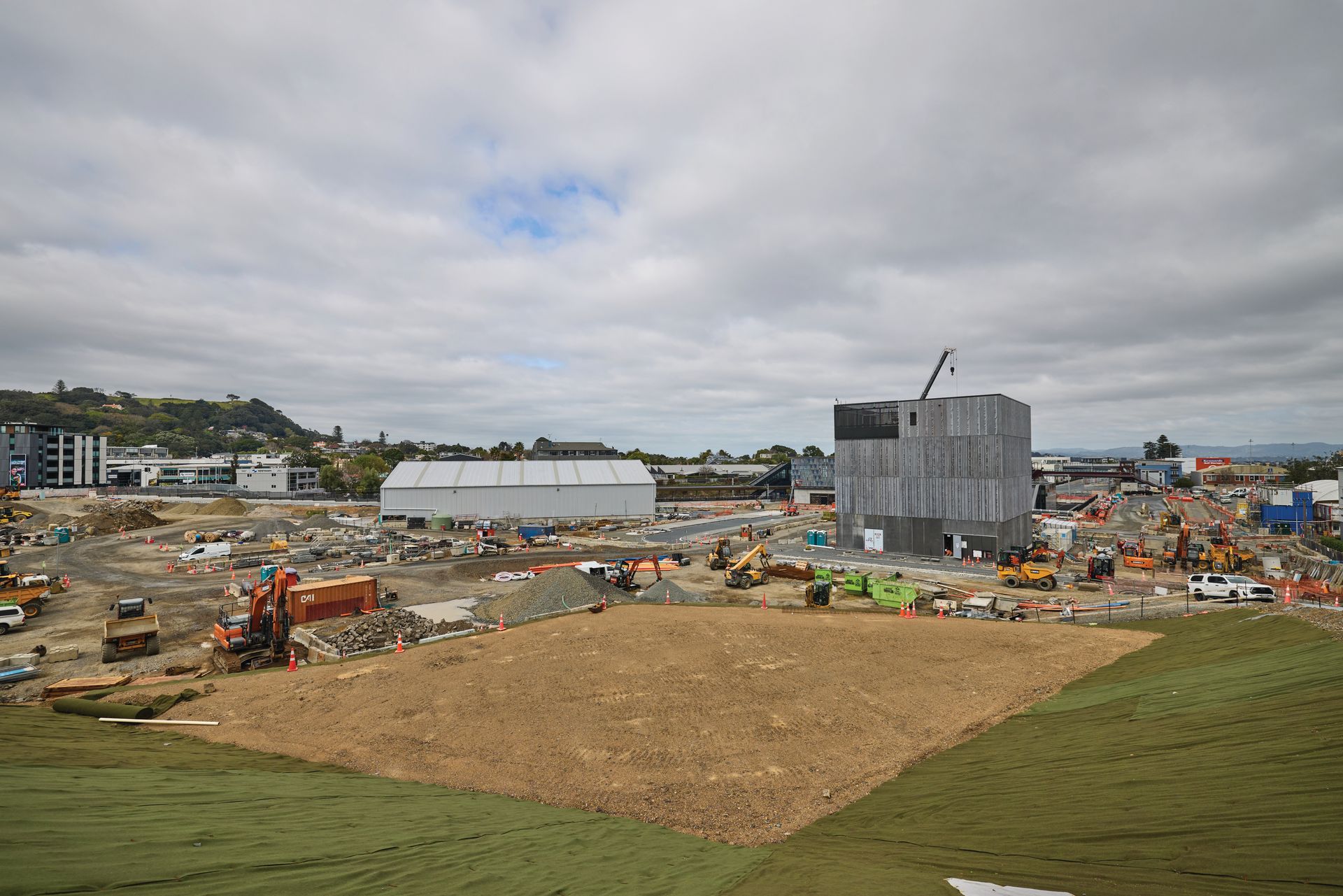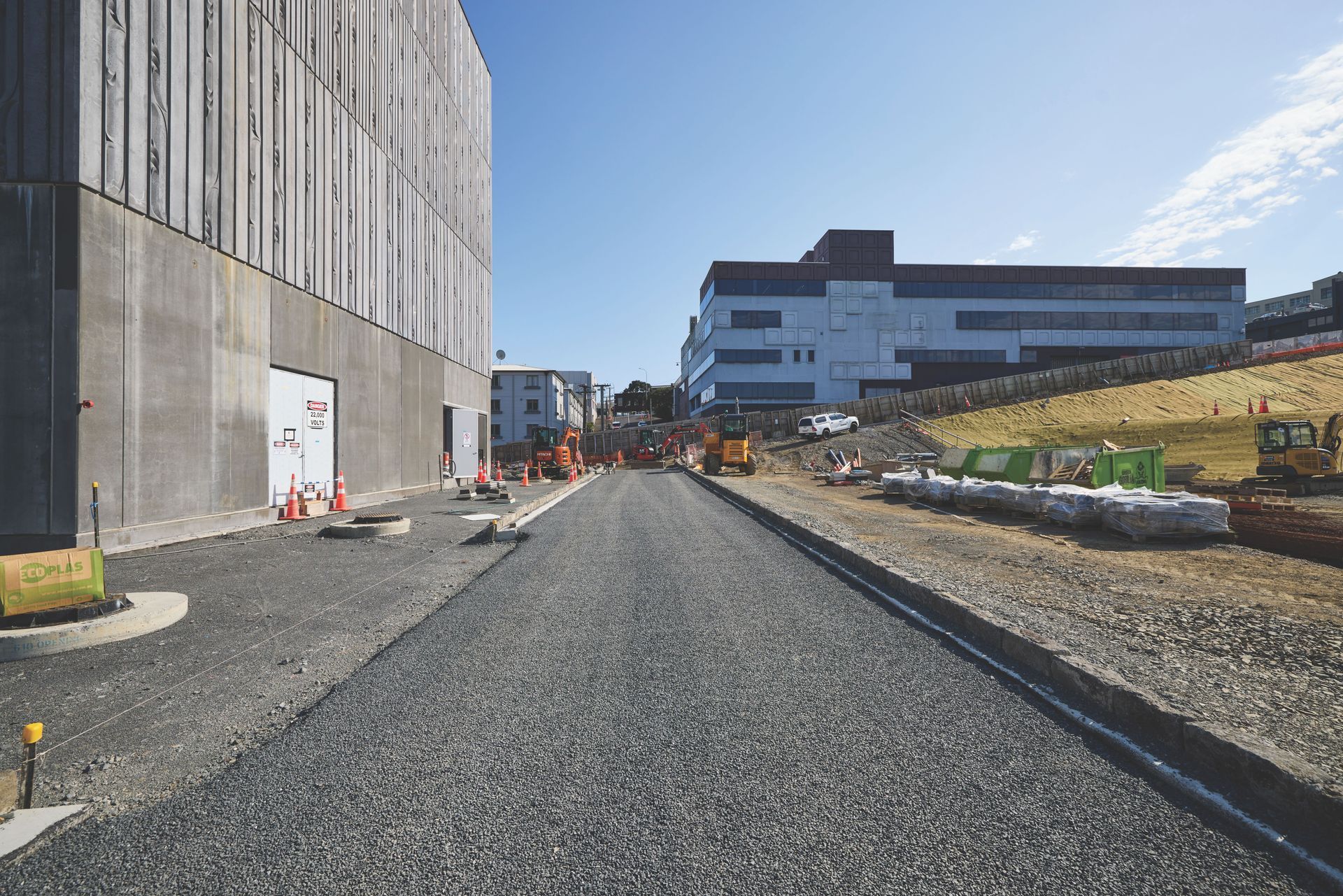
Maungawhau station and the reshaping of Uptown
Words: Russell Brown
Photography: Mark Barber
The Business Association has been actively facilitating a vision for the vacant land around the old Mount Eden railway station into the new Maungawhau CRL station. Through activities like this magazine, events like the Uptown Futures Festival, and engaging with Auckland Council and its Council Controlled Organisations, the Business Association has championed innovative and bold use of the land. Our priority is that the development doesn’t miss the opportunity to build upon the existing neighbourhood, embracing its heritage, diversity and creativity.
There has been excellent ongoing community engagement on the state of the station construction, but much less, if anything has been heard on the development use. The places and spaces that will surround it are crucial to our community.
This much we know: the station will be completed late next year, in time for the CRL to begin operating in 2026. The 3.2 hectares of land around it, jointly owned by Auckland Council and the Government, has been divided into seven parcels that will be put out to commercial development after the station is finished.
The basic elements of the precinct plan were published by Eke Panuku, the council’s development agency, in December 2022. The plan calls for an “exemplar net zero carbon urban regeneration development” that includes hundreds of new homes along with a “true mixed use” strategy intended to “build communities of residents, workers and visitors”. There is a major emphasis on walkability and access to cycling and public transport links.
But there are still many unanswered questions about what happens when, and plans for the wider Uptown neighbourhood. In part that’s inevitable: most of the land is scoped for commercial development that has yet to be put out to the market. Some is subject to first right of refusal for mana whenua. Kainga Ora’s plans for a part of the site that could hold 50 dwellings are still subject to the Government’s review of its housing agency. You’ll see what it looks like in 10 years’ time, but in five, the shovels may only just be going into the ground.
“For most of our bigger developments. you’ve got about a three-to four-year development window between when you see an advertisement go out to say the site’s available for market to when you might see a digger on site,” says Eke Panuku’s location director Kate Cumberpatch. “Within that three to four years, you’ve got development agreement negotiations, which will take a chunk of that time. Then with the preferred party, they need to do their designs, they need to get their consent, they need to ramp up and get ready for construction.”
It’s not yet clear what will happen while that process rolls out.
“That’s one of the things we’ve been talking to Eke Panuku about,” says Julie Fairey, the Auckland councillor for Albert-Eden. “The kind of conditions they’re going to put on the building consents, effectively. When people have an issue, who do they call and how is it dealt with? All that kind of stuff that’s potentially going to be more difficult if there’s multiple development partners and different sites. So there may be a role for council in terms of providing a bit of coordination there.”
“We are still working through exactly what that plan looks like,” says Cumberpatch. “That will need to be in collaboration with Auckland Transport and also with City Rail Link Limited on how they close out the sites when they’re ready and done. For walkability and accessibility, there are a few key routes within the precinct, so not every single avenue around that precinct needs to be of priority for activation, or for people to comfortably walk around.
“We are expecting there might be a few vacant sites within there. We’re starting to look at what sort of temporary activities could be done. Would it be nice to grass the area for a while and let people have some open space and a bit of a breather from all the construction?"
One area that will definitely be a park - albeit pocket-sized and quite steeply sloping - is the one running down from the bottom of Flower Street over the tunnel portal to the new Karanga-a-hape station. You can already get an idea of what future shared spaces could look like in Fenton Street to the west of the station, which is on one side of a newly-constructed walk-and-cycle overbridge. (The wider problem of how to handle the transition from a light-industrial area to a zone for people is highlighted by the continuing presence of an established tow truck business there.)

This is where we start to grapple with the sheer number of stakeholders in the job. Link Alliance, the consortium building the CRL stations, tunnels and tracks, and CRL Limited itself have seperate "urban realm" construction commitments. You can expect to see a lot of streetscaping done in the area between New North Road and Nikau Street for the remainder of this year and work is underway "inside the fence" for a walk-and-cycle path connecting Mount Eden Road and Shaddock Street, alongside roads and footpaths to be delivered by Link Alliance. These will in turn connect to the main enterance of the station.
Other parts of the promised transport hub are the domain of Auckland Transport. Suresh Patel, AT's network integration manager, says the plan is for a low-traffic neighbourhood.
"Walking connections through the neighbourhood to the station are especially important to give people easy access to public transport, letting them get wherever they need to go without needing to rely on a car," he says. "AT is working closely with Eke Panuku to make the walking environment pleasant and accessible, with a focus on pathways that people will use as main connections to the station."
Pete Moth, AT's head of public transport planning and development, says bus stops on Mount Eden Road will be relocated to be as close as possible to new walking paths to the station (similar work has already been done on New North Road) and there will be bike parking and short-term parking for mobility users close to the station entrance.
But there are still large pieces missing. AT could not confirm any plans to improve cycle connections between the development area and existing bike routes, or to make Upper Symonds Street (which the precinct plans describes as currently “undermined by traffic and street forms”) more people-friendly and less of a barrier.
Cumberpatch says that Eke Panuku will “strive” to respond to the existing character of Uptown and has paid attention to the work the business association has done in recent years. The current crop of NGOs that have gravitated to Uptown over the years, attracted by the affordable rent, will hopefully be able to maintain their connection with the area.
“There’s been conversations around whether there’s a way of bringing the NGOs together into a co-working space that suits them and still allows the cheaper rentals,” she says. “All these things need to be considered once we have development partners. Any architects that come through with designs through the process will need to take into account all those things.”
It’s a similar story for ideas about housing innovation, something different to the usual apartments, in the area. It’s a wait and see what comes through in commercial development proposals.
Fairey says the lack of firm answers is partially down to the fact that “so much of it is actually going to be sites that other people will develop, and at this point that stuff is unclear and uncommitted”.
“They [Eke Panuku] don't know whether they’re going to be offering six sites or two sites. If one big developer picks up all the sites or a significant portion of the site, then that might be a master planning process that they might lead, in which case Eke Panuku and council might step back a bit.”
So that’s it for now. There’s a vision and a timeframe, but exactly what happens within both of those is not yet clear. There is much to be confirmed.

Basque Park upgrade
One thing we’ve heard very clearly from the people of Uptown is the value they place on Basque Park. Eke Panuku’s CRL precinct plan agrees, characterising an upgrade of the park as a “key opportunity ... to meet expectations for a park of this scale and role in the neighbourhood”.
Happily – because in this case, it’s not tied to the CRL station
site – that is underway. The Waitematā Local Board allocated $250,000 for the project earlier this year and the first phase of the park upgrade, including connection paths, seating areas and planting, has been completed. Boardwalks have been constructed of recycled plastic, diverting 1.125 million plastic bags from landfill. Phase two of the works will start in 2026 and will include a nature play area and additional planting.
More Schools for Uptown?
This also comes up frequently and will become more of an issue as the number of families living in Uptown grows. Kate Cumberpatch says Eke Panuku has had some conversations with the Ministry of Education, which is “currently of the view that the current schools have the capacity and are within easily-accessible walking or public transport routes for students.”
